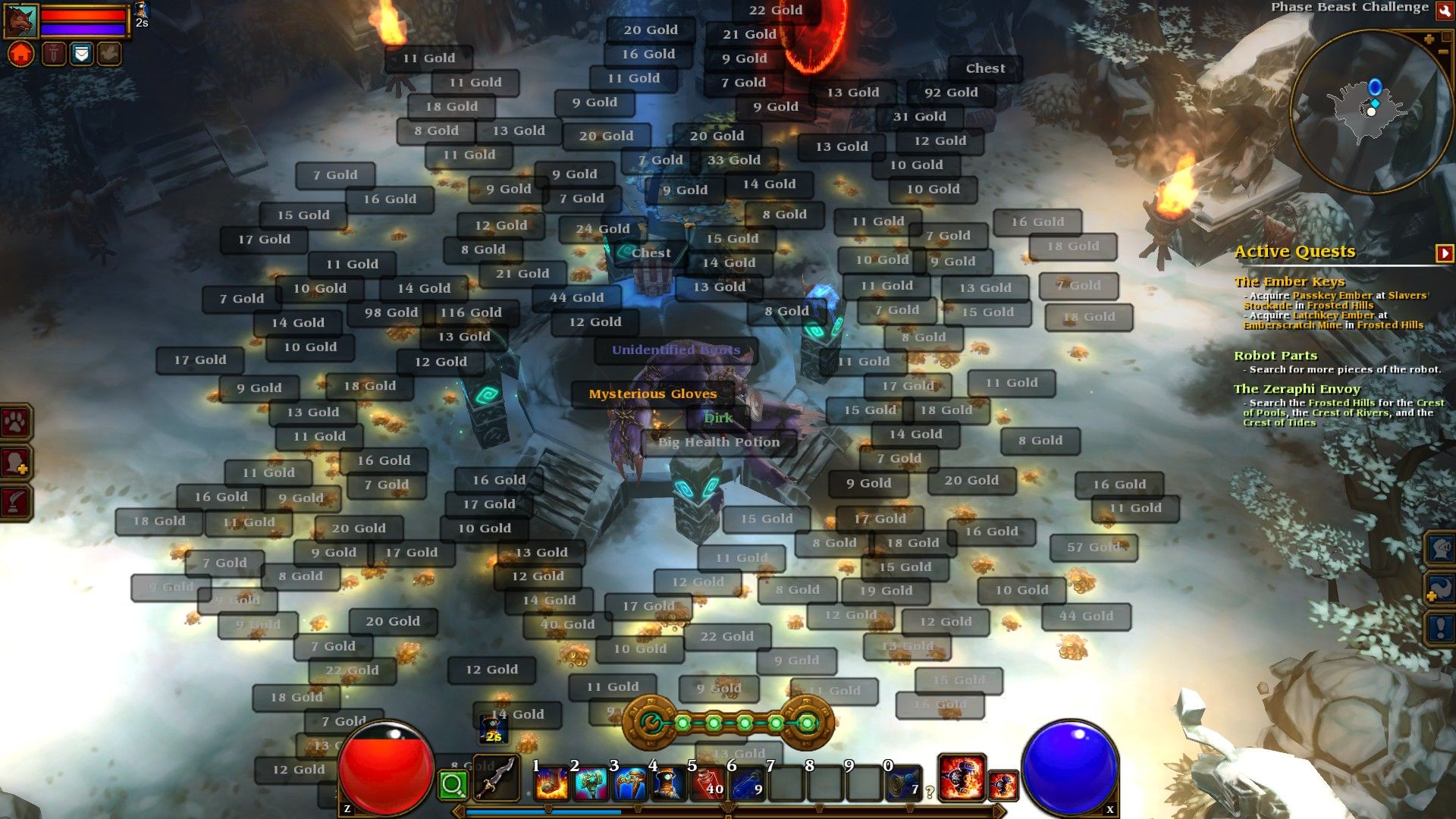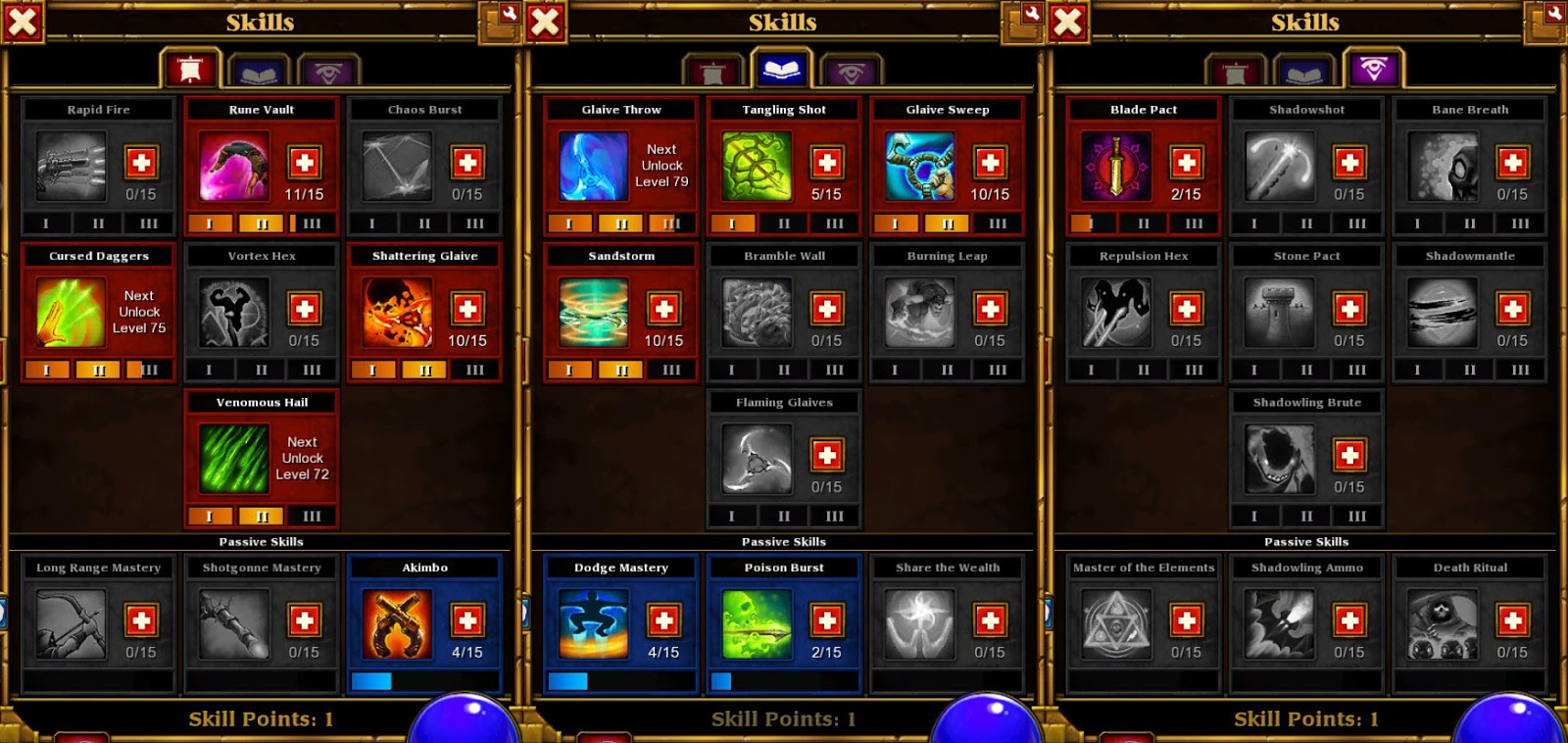
Game Description
Torchlight II is an action role-playing game (ARPG) developed by Runic Games, released on September 20, 2012. Torchlight II takes place in a fantasy world where the player controls the hero in the story to banish the evil from the world. Torchlight II has been rated 9.1/10 on the Imagine Games Network (IGN) which praised the game saying, “Torchlight II doesn’t do anything radically new, but does everything incredibly well. It fits all the pieces of varied monster behavior, interesting items, excellent skill design and random surprises together into a near-perfect formula, where the action never stops and rewards are never far away.” The game has sold almost 3 million copies as of 2015.
Lens of Essential Experience (#1)
The essence of Torchlight II is about wholesale and gleeful slaughter. Such essential experience is captured and enhanced by a series of actions of the player:
- Fight with huge packs of monsters until they die and spill gold and gear all over the ground.
- Scan item stats to see if any can serve as an upgrade.
- Earn experience to level up. Improve attributes and learn new skills or upgrade skills to make the character more powerful.
- Move on to the next monster pack and repeat.
A player can do this for around 30 hours until the final boss is killed, and then start up New Game Plus (NG+) and repeat the whole process.

Furthermore, the story-line is simple and background introduction is very short. The player is dropped into fields of monsters within a few minutes of starting up. The story or game plot is not much emphasized on, but it is the experience of slaughter that is important. Torchlight II clearly gets straight to the point.
Additionally, the pet system allows the player to keep slaying monsters without going back to town. The pet can serve as an alternative inventory and can be sent off to sell unwanted gear while the play keep killing monsters in dungeons. Pet can also buy potions and scrolls. The player needs not worry about selling gear and buying necessities which may cause irritation and hinder the gleeful and smooth experience of slaughter.
Lens of Endogenous Value (#5)
Torchlight II is a typical loot-driven ARPG and items such as gear and gems are highly valuable to the players as they have direct impact on damage and survival of the character, which enhances players’ enjoyment in slaying monsters.
Items dropped from monsters are totally randomized. The player does not know what kinds of loot he will get from killing monsters. Sometimes it is a basic two-hand sword that the player will never use, sometimes it is a legendary mage staff with high damage and perfect stats, which when equipped inspires great confidence and a feeling of ever-growing power to the player. Players will place higher value on items that are useful and can complement to their play styles. Players are motivated to constantly kill monsters and defeat dungeon bosses to hunt for treasures.

Lens of Challenge (#31)
There are four levels of difficulty in Torchlight II. People with different levels of skills and familiarity of the game can choose the level of challenge that is most suitable for them. The character gets increasingly powerful by levelling up and gear upgrading, as well as the monsters. Player will neither feel too easy to kill the monsters, nor too hard. There is balance between boss challenge and entertainment value. People are not just grinding by spamming healing and mana portions but must dodge spells of the dungeon boss and take certain strategies to defeat it.

Lens of Meaningful Choices (#32)
Upon level up, attribute and skill points are earnt. Players must decide on how to distribute the attribute points as there is attribute and level restriction on gear. Since attribute points cannot be reset, players must be careful when they make the decision. There are three specializations for each class in terms of spells and passive skills. Since skill points are limited (one for each level), each character has a unique set of skills, which gives its player a powerful sense of identity. Every decision made in the skill tree is important because only 3 skill points can be reset and it is expensive. There is no dominant strategy in Torchlight II. No choice is wrong and it is a matter of preference.

Lens of Elemental Tetrad (#7)
Mechanics: the main mechanics of Torchlight II are simple and designed in a way to maximize players’ gleeful experience in slaying monsters. The main procedures of the game are as follows:
- Receive a quest given by Non-Player Characters (NPCs).
- Kill monsters on the map while searching for quest item and target.
- Defeat dungeon bosses if needed.
- Complete the quest, and repeat.
Story: as the focus of Torchlight II is on slaughter of monsters and boss challenge, the story-line is extremely short and simple. Players learn about brief background story via the beginning cinematic which takes about thirty seconds. The rest of story is incorporated into the quests. The story is neither creative nor attractive – simply a cliché of the hero defeating the evil. However, under such circumstances, the slaughter of players is morally justified, and players would not feel guilty but instead, enjoy the execution of righteous punishment.
Aesthetics: Torchlight II adopts 2.5D graphics in Steampunk style. Characters and monsters are not very detailed and real. This prevents players from being terrified of blood, skeletons and corpse. The cartoon style graphics, in fact, make people happier and more relaxed. The scene is slightly dark and sometimes rainy. The weather effect creates depressing atmosphere. The music of Torchlight II changes every scene, and creates different feeling. For example, the music of desert has much lower pitch and slower rhythm than that of rain-forest. The music changes drastically once the dungeon boss comes out. It becomes faster and more intense, which makes players more excited and concentrated. The user interface is clean and simple. Big health and energy “circles” are used instead of typical “bars” because during fighting, players can simply glance at them while focusing on killing monsters.
Technology: Torchlight II is only available on PC, more specifically, Windows. Only simple mouse clicking and keyboard buttons are involved. Players would not have any difficulty in controlling the character.

Lastly, I would like to share some of my personal feeling when playing this game. Since Torchlight II is developed by the same team of designers of Diablo II and released in the same year of Diablo III by Blizzard, people often compare them. At the beginning, Torchlight II was much better in many aspects, including companion (pet) system, skill tree and boss fighting mechanics. However, when the expansion pack Diablo III: Reaper of Souls came out, Torchlight II was far behind in terms of its multi-player system and it was the major downfall. People will eventually get tired and bored when they keep doing the same thing. The happiness and excitement that they can obtain from the game will drop drastically as playing time increases. They need a constant motivation which can make them stick to the game longer. Diablo III came up with the seasonal ranking system where players have to start from zero in every season and gears are constantly updated. That is why we can see many players come back to Diablo III when every season starts. I enjoyed playing Torchlight II and I still do. I really hope Runic Games can continue to produce good games.

